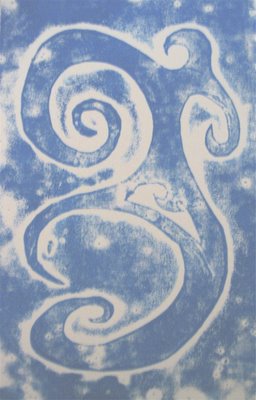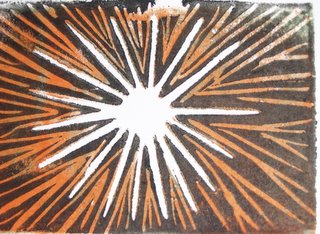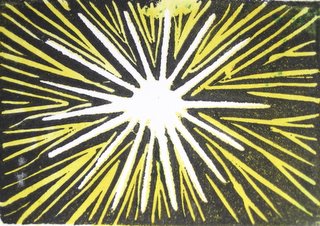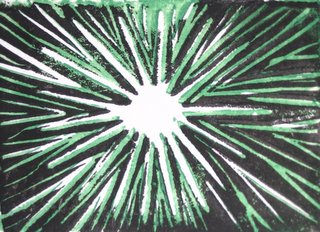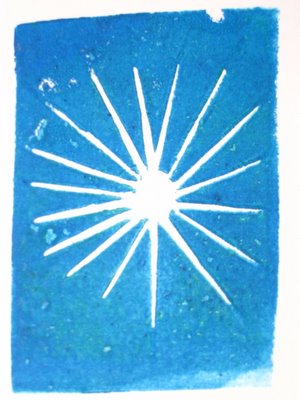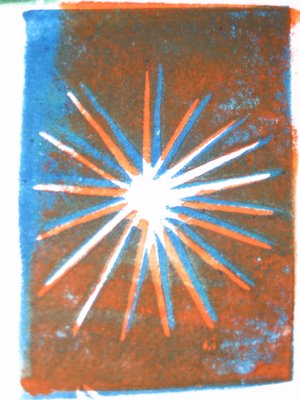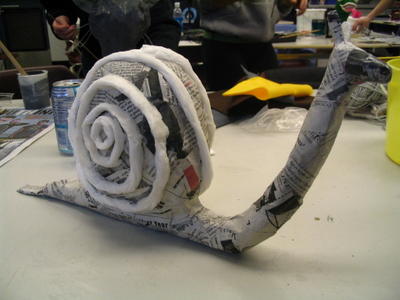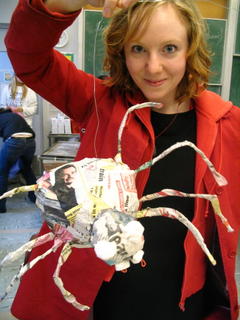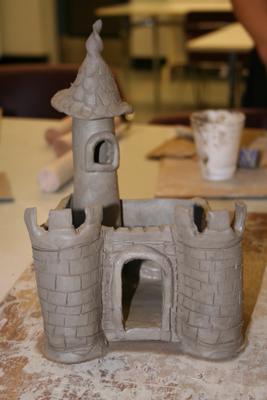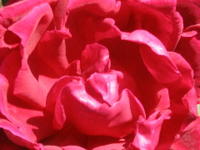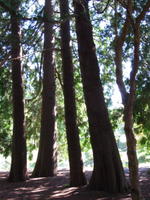My great Aunt was silent. For the last
twenty-two years of her life she was a widower. Her husband, my
uncle, had passed away from lung cancer when I was a very young child.
My mom would argue that her spirit had also died with him. Despite
seeing the pictures of jovial parties, parlor games, and lots and lots
of drinking, I would never see my great Aunt use more than the
necessary muscles in her cheekbones to say 'hello'. To me, she was
just an old relative waiting out her existence. As the years passed,
I saw less of my Aunt, except for the obligatory Christmas dinners and
the occasional Sunday mass. My mom, bent over backwards to ensure
that Auntie received the necessary nutrients and the rest that she
required.
Then late in the spring of 1998, Auntie began to fall. Despite her
pleas of independence my family chose to do what every guilty living
western American family does, we moved her into an elderly residence.
In all honesty, it was the best thing that could have ever happened
to Auntie. She was constantly surrounded by friends, visited by
family every week, and entertained through a variety of activities.
Perhaps, to spite us, or just because she was stuck in her ways,
Auntie still did not reveal anything of value in her life. She hated
life. Week after week, she would respond to my questions with a dull
"life is boring'. It killed me. Who was this 92 year old woman who
claimed to be my grandmother's sister? What do we have in common?
What talents did she possess? It was truly frustrating.
Then during our last Christmas (Auntie died in 2003) I decided to put
my undergraduate degree in practice. I was in my final portion of my
history degree, and Auntie was sitting in her usual chair in our
living room. Ironically, it really was her chair that we had
introduced into our house when Auntie downsized into the elderly
residence. I realized that Christmas was the only true time of the
year that Auntie could consume alcohol at her leisure, and so I took
advantage of her state of mind. I put my history skills to the test,
and started probing my Aunt's mind for information on her past. I
wanted to know who she was. I wanted to know what she did. I wanted
to know her talents and skills. In the end, I got a short story (a
repeated short story at that) of the life of a young Auntie. It was
amazing to see the memories that she could bring up. She couldn't
tell me anything about 10 minutes ago, but she could tell me the
number of steps from her back porch to the lone apple tree in her
mother's garden. She could tell me that it took seven turns to roll
out her mother's ruff puff pastry. And she remembered in detail the
'bitch' (her usage of this word did indeed shock me) piano teacher who
slapped her hands every time Auntie played the wrong note. Although
it was a short 20 minute conversation, to me I felt like the whole
world was revealed.
Auntie hated life, and everyone knew it. She wanted it to end. And
the week before it did, she feared it. You could see it in her eyes,
an almost apologetic look. She died in her sleep. At the funeral, my
Dad did an amazing eulogy. Instead of talking about Auntie's life (we
knew little of it), my Dad connected our family's memories to the
moments we shared with Auntie. And there were many. My Dad brought
up images (the stairway up to her apartment) and smells (the musty
smell in her apartment elevator). My Dad opened our eyes to the
memories that he shared of the days before my birth. Auntie wasn't
always bitter. Life really had let her down. She was a single woman,
without any taught skills. She couldn't drive, use a typewriter, or
operate any piece of machinery. But she didn't have to. She was
Auntie, and Auntie didn't do those things. In a final statement, my
Dad asked that we let Auntie's memory live on in our own personal way.
Despite her lack of skill and pessimism on life, she had still
touched us all. My Dad closed with one of Auntie's many famous quips
"I'll see you on top of the Christmas tree!"
Today, Auntie still lives on in my life. In fact, she is a crucial
part of my art life. Last year, I had the opportunity to work with
the greatest bunch of Kindergarten kids at Douglas Park Community
Center. One day, during play time with the kids I developed a
character named Mrs. Marmelade. She became the splitting image of
Auntie. She is witty, pessimistic, and lacking of many social skills.
Yet every child fell in love with her. Mrs. Marmelade eventually
made a monthly cookie and milk visit to Douglas Park (in full costume)
sharing her stories of ruff puff pastry, and the exact number of steps
it took to get from the back porch to the lone apple tree in her
backyard. Although it has been four months since Mrs. Marmelade made
her last visit to Douglas Park, she had such an effect on the kids
that I have received calls to do birthday parties as her. Ironically,
it was these parties of Aunties' that I missed seeing when growing up
that are now reflective in my character acting.
Every Christmas, I toast to the chair that she once occupied.






